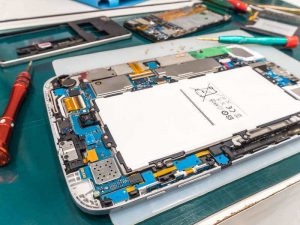 As New Jersey regulators implement changes to the state’s electronics recycling law, they say they have no intention of creating a statewide standard plan, according to the leader of a recycling group in the state.
As New Jersey regulators implement changes to the state’s electronics recycling law, they say they have no intention of creating a statewide standard plan, according to the leader of a recycling group in the state.

 As New Jersey regulators implement changes to the state’s electronics recycling law, they say they have no intention of creating a statewide standard plan, according to the leader of a recycling group in the state.
As New Jersey regulators implement changes to the state’s electronics recycling law, they say they have no intention of creating a statewide standard plan, according to the leader of a recycling group in the state.
 Illinois Gov. Bruce Rauner will soon have to decide whether to sign off on two bills that would substantially transform the state’s e-scrap program.
Illinois Gov. Bruce Rauner will soon have to decide whether to sign off on two bills that would substantially transform the state’s e-scrap program.
 Chinese customs authorities announced a crackdown on illegal imports of scrap electronics and other materials.
Chinese customs authorities announced a crackdown on illegal imports of scrap electronics and other materials.
 Several years of lagging recovered material totals have led leaders of Oregon’s e-scrap program to slash weight targets for manufacturers beginning next year.
Several years of lagging recovered material totals have led leaders of Oregon’s e-scrap program to slash weight targets for manufacturers beginning next year.
 Starting next month, $3 million worth of grants will be available to local governments in New York that are paying to recycle electronics. The money, from the state’s Environmental Protection Fund, is supposed to help municipalities cover shortfalls in the program.
Starting next month, $3 million worth of grants will be available to local governments in New York that are paying to recycle electronics. The money, from the state’s Environmental Protection Fund, is supposed to help municipalities cover shortfalls in the program.
 Public entities continue to take the pledge to become participants in the State Electronics Challenge, indicating their willingness to become better stewards of electronics.
Public entities continue to take the pledge to become participants in the State Electronics Challenge, indicating their willingness to become better stewards of electronics.
 On average, popular phones, tablets and laptops are relatively easy to fix, but the market may be trending toward less repairable designs, a recent analysis found.
On average, popular phones, tablets and laptops are relatively easy to fix, but the market may be trending toward less repairable designs, a recent analysis found.
 Oregon regulators have fined Total Reclaim more than $160,000 for allegedly violating hazardous waste laws, but the e-scrap processor denies the allegations and has appealed the penalty.
Oregon regulators have fined Total Reclaim more than $160,000 for allegedly violating hazardous waste laws, but the e-scrap processor denies the allegations and has appealed the penalty.
New estimates on the time it takes for a flat-panel display TV to enter the U.K. waste stream have been released. Continue Reading
The U.S. EPA developed its 2006 rule on CRT management to help divert the lead-containing glass away from disposal and toward recycling. But a decade later, with the value of recovered glass a negative, the U.S. continues to see high-profile instances in which recycling isn’t occurring.
